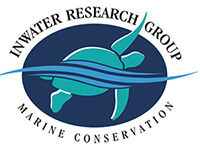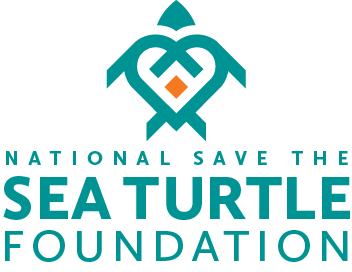What Are You Doing Here?
Ryan M. Chabot, Inwater Research Group


Though closely related to the Kemp’s Ridley (Lepidochelys kempii), the Olive Ridley sea turtle (Lepidochelys olivacea) is is extremely rare in Florida. They are a relatively small species of sea turtle, and can be found in most tropical waters around the world, but often prefer offshore waters where encounters are less frequent.
Saturday, May 11, 2019 started out like any ordinary day for the team of biologists at Inwater Research Group (IRG), but quickly changed into one of the most exciting events of the year. While conducting routine monitoring of our St. Lucie study site, we captured an adult male olive ridley (Lepidochelys olivacea) sea turtle. Although olive ridleys are commonly found in parts of the Atlantic, Pacific, and Indian Oceans, finding one in Florida is an extremely rare event! Unlike most other hard-shelled sea turtle species, olive ridleys spend much of their life in offshore or continental shelf waters, making in-water encounters of them infrequent. Even more so, nesting in the Atlantic is restricted to the northeastern coasts of South America and the central coast of West Africa. Since record keeping began in Florida, there have only been seven other sightings of olive ridleys in the state, six of which were sick or debilitated animals that needed rehabilitation or subsequently died, while the seventh was discovered dead. Unlike these other turtles, this olive ridley appeared to be in near-perfect physical condition. The only other healthy confirmed olive ridley observed by researchers in U.S. waters was by the South Carolina Department of Natural Resources during one of their annual research cruises.
The sightings of olive ridleys in Florida raise some very interesting questions. Is it normal for the species to be in our waters? Or is this turtle a stray who accidentally wandered all the way from South America or Africa? How do we protect a species for which we have no real information about their behavior in U.S. waters? To try and at least begin answering these questions, we reached out to the U.S. Fish and Wildlife Service (FWS) and our collaborators at Gumbo Limbo Nature Center (GLNC) for help.
With experienced guidance from FWS about species protocols, and generous support from GLNC, we had a once-in-a-lifetime opportunity to track this turtle’s movements. Like every other sea turtle we encounter, the olive ridley was first given a full assessment including being weighed and measured. Metal flippers tags and a microchip were also applied, which can be used to identify the animal if it’s seen again. But since this encounter was so special, the turtle was also affectionately named “Jasper.”

Researchers with the InwaterResearch Group examined andtagged “Jasper” for future identification.

Jasper the wayward olive ridley will carry two kinds of remote sensing devices. The larger transmitter on the apex of the shell can communicate with satellites to record long-distance movements. The smaller device near the rear of the shell can communicate with acoustic listening stations along the coastline
The IRG team then outfitted Jasper with a small acoustic tag. A series of acoustic receivers along the east coast of the US constantly “listens” for the presence of animals with acoustic tags. So, if Jasper gets close enough to any of these receivers, it will record when and where he was “heard”. However, these receivers are mostly in very nearshore waters, so if Jasper wanders further from shore, they wouldn’t be able to hear his acoustic tag. Fortunately, the sea turtle team from GLNC rushed to deliver a satellite transmitter they had on hand to apply to Jasper. Much like the tracking technology in your car and phone, whenever the antenna on Jasper’s satellite transmitter breaks the water’s surface (like when he comes up to breathe), it transmits his position to satellites overhead. The materials used to attach these transmitters will degrade over time, so Jasper will simply shed the tags when he makes new shell material as he grows. These two technologies combined will hopefully give us some new insight on just what olive ridleys found in the Northwest Atlantic do during their time here. This information, in turn, can help us as researchers and conservation managers better understand what everyone can do to ensure the long-term survival of this high seas traveler. Cheers to safe travels for Jasper, a one-in-a-million find!
Jasper’s satellite transmitter tracking map can be viewed at:www.inwater.org/jasper

Helping Sea Turtles Survive for 38 Years
A NON-PROFIT ORGANIZATION
State of Florida Registration Number CH-2841 | Internal Revenue Code 501 (c) (3)
Web Design & Development by Web Expressions, LLC

